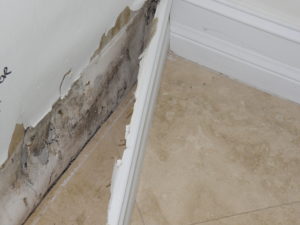Mycotoxins
With a growing awareness of the potential hazards of chemical and biological agents in our homes, schools and workplaces, a greater emphasis has been placed on evaluating the role of mycotoxins and mycotoxin producing fungi in our indoor
environments. Now, more then ever, the potential health effects of airborne molds and other biological contaminants are being given serious consideration in Indoor Air Quality investigations.
Mycotoxins
Simply, mycotoxins are any toxic fungal metabolite. Fungi produce a variety of secondary metabolites as a byproduct of their metabolism. Those capable of eliciting deleterious effects on other organisms are classified as mycotoxins. Mycotoxicosis can be defined as illness resulting from ingestion, inhalation, or other involvement with mycotoxins.
Mold mycotoxins of primary concern here elicit a harmful effect on humans. Other substances such as those produced by poisonous mushrooms are also mycotoxins, and mycetismus is the term applied to mushroom poisoning as a distinct category of mycotoxicosis. The discovery of antibiotics produced by fungi revolutionized the treatment of disease because the compounds are sufficiently nontoxic to the host. In nature, mycotoxins are a chemical defense for fungi and have evolved as mechanisms for antiherbivory and to provide a competitive advantage when colonizing new substrata. Read More
Mycotoxins
Source: Mycotoxins and Indoor Molds By Sean P. Abbott, Ph.D.





